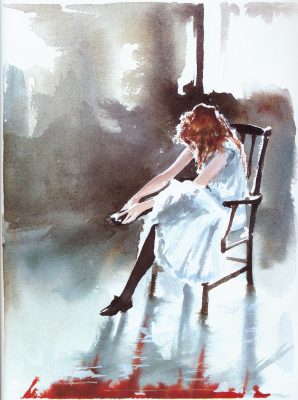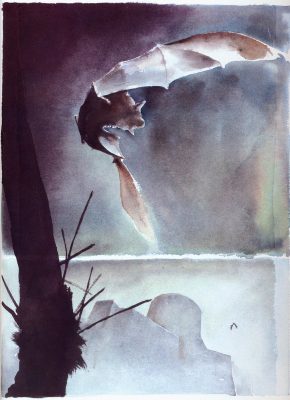Reviewer: Emera
Date read: 9.22.2019, 11.21.2019
Book from: Library
This is a review of the first two books in the Kristin Lavransdatter trilogy: The Bridal Wreath and The Wife. I read the recent translations from the Norwegian by Tiina Nunnally, after giving up on the original translations by Charles Archer and J. S. Scott, which are self-consciously archaic and expurgated significant passages.
In early 1300s Norway, Kristin Lavransdatter is the eldest daughter of a charismatic, gentle, and adoring father, and a distant, melancholy mother. In The Bridal Wreath, Kristin grows from a quiet child into a quietly fiery – and occasionally cruel – young woman, and thwarts her parents’ plans for her future by flinging herself into a romance with the passionate but disastrously irresponsible nobleman Erlend Nikulausson. In The Wife, Kristin struggles to live with the guilt of the sins that she and Erlend committed in the course of clinging to their relationship, while now striving to lead her new household – where she is initially regarded with derision – with grace and strength. Her fervent embrace of Christianity serves sometimes as a comfort, and sometimes as one of several wedges between her and Erlend. Meanwhile, foolhardy Erlend is drawn further and further into the turbulent politics surrounding the fate of the Norwegian throne at the time, with eventually ruinous consequences for their family’s fortunes.
The way I keep on describing these books (which won the 1928 Nobel Prize) to people is a medieval Scandinavian version of Anna Karenina. They concern themselves with a span of decades in the lives of aristocrats in a severe land, but viewed through incredibly intimate, often stream-of-consciousness renditions of women’s experience in particular. The conflict between personal passion and social responsibility, the torment of guilt, the struggle to understand what it is to live a Christian life, hypocrisy, infidelity, the temptation of cruelty, and the closeness of mortality all weigh heavily on the characters. This all plays out against a medieval setting that is rendered so vividly and naturalistically that it seems as if Undset is reporting directly from that century. (It made a lot more sense to me when I read that Undset’s father was an archaeologist and her mother his secretary/illustrator: she grew up immersed in history.)
How to describe the effect of these books – what is so piercingly compelling about them? The experience of Undset’s cool, fluid, and methodical prose – especially with Nunnally’s exactingly clean translation – is immersive, hypnotic, yet, frankly, at times boring. Even though I love nature writing, for example, I was frequently bored during the first quarter or so of The Bridal Wreath, when Kristin is a child, no obvious narrative stakes have been established, and there are lengthy descriptions of their days amid the fields, mountains, seasonal turns, etc.
But as soon as any emotional stakes have been raised – I can’t think of many authors who can equal the way that Undset writes emotional pain and difficult love. Her distinct coolness is an asset: she has this devastating way of leading you directly into a character’s emotional crisis, and then departing just as the scene barely begins to round off, so that the aftermath must simply be imagined. Or, she mentions devastating revelations about previously beloved characters in a mere one or two sentences, slipping by in the relentless onward march of time. (It “helps” that Undset makes no bones about the closeness of death in medieval times: characters die with great frequency, whether through illness, accident, or violence.)
There are so many moments in the books of purely emotional experience that I feel I’ll never forget – the incredibly cold ending of The Bridal Wreath, or the several heart-rending scenes of devotion between Kristin’s aging parents in The Wife, or Kristin’s pained reflections on how little she understood the depths of her parents’ lives, or their love for her.
Again, I’ll be honest that I questioned several times (out of boredom, overwhelming melancholy, or both) whether I really wanted to finish the series. But Undset’s sort of gentle severity is so uniquely compelling and transportative; again and again, I concluded that I had to see it through, and follow her characters to their ends. I’ll be reading the final volume of the trilogy, The Cross, over the next month or two.

